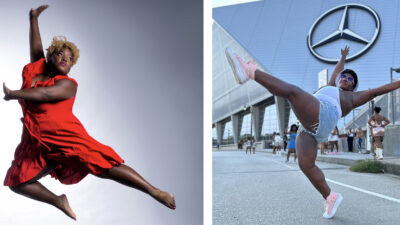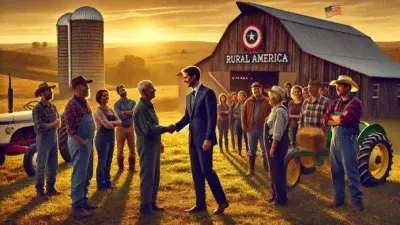
Dancer and choreographer Jailyn Harris has a grand vision for a project that is both historic and personal in scope.
The 33-year-old Cleveland-based performer is producing a dance film titled “Ivy in Motion,” an exploration of fashion in the Black community, particularly the Ivy/Preppy look.
Harris was inspired by the fashion’s influence on earlier Jazz musicians, Civil Rights activists, Hip Hop artists, as well as family and fellow dancers.
“Learning about fashion history directly from my aunt who worked as a seamstress, or having one of my dancers explain how her grandmother had to carry around a work permit in Jim Crow Miami has been eye-opening and invaluable,” she says.
Harris recently received a grant from Cleveland’s Karamu House — the oldest black theater in the country — to help finance this ambitious project, which includes paying a cast of dancers and film crew.
“Once the film has been shot and edited, I do hope to be able to submit the finished work to festivals to share it with a larger audience,” she adds.
Harris took some time out from her production to answer Postindustrial’s “Three Questions” about what inspires her to move, the specifics of her film, and more.
Postindustrial: What inspires you to dance?
Harris: When I was growing up, I had a speech impediment that caused me to be a little hesitant when speaking with others. My mom’s tap teacher — who I get to work with as an assistant teacher — noticed that I had a natural affinity for dance and movement and encouraged her to sign me up for classes. Since then, dance has been a way for me to express myself when I cannot find the words or cannot properly articulate my ideas.
I think my inspiration comes from a myriad of sources. I dance to push myself, I dance to explore a concept or thought that I’m working through, I dance to connect with others. For me, I think I experience the world through dance, movement, and music.
The other day I was in line at a drive-thru and I noticed a cool rhythm being tapped out on my windshield by some raindrops. I started dancing a little bit and just felt like a weight had been lifted at that moment. Dance allows me to express gratitude for the small things around me while also serving as a tool to help me get where I want to go.
Postindustrial: You’re currently working on a dance film. What’s your film about? Which films featuring dance inspire you?
Harris: My film is about the history and rise of Ivy/Preppy fashion in the Black community. I was inspired by this podcast I listen to called “Articles of Interest” — a year or two ago, they did a seven-part series on Ivy fashion. They were getting really in-depth and talking about the various communities that contributed to the style.
They discussed the way Ivy fashion was a part of the aesthetic for a lot of Black Jazz musicians of the ’50s and how it became a tool of the Civil Rights Movement in the ’60s. As they were talking, I could picture the movement of the garments and I wanted to find a way to combine that with the storytelling narrative that sees these seemingly mundane clothing items take on a personality and role of its own in relation to Black culture.
My goal is to start in the 1950s with the Jazz interpretation of Ivy style and then see how it transforms from decade to decade; each reincarnation is slightly different but also serves as the springboard for the next, both in terms of style and societal issues happening congruently. In terms of dance films or films featuring dance that inspire me, there’s so many! “Center Stage” is the first that comes to mind. There’s this shot of three of the main dancers onstage and then it pulls away and suddenly cuts to the featured ballerina dancing with corps; I’m sure it was an easy shot to set up but every time I see it, I’m always impressed.
And I was OBSESSED with the dance sequence between Fred Astaire and Katherine Hepburn in “Funny Face” — I think I rented that DVD from the library so many times. I grew up watching “The Wiz,” so I think I definitely incorporate some of that funk and whimsy into my movement. I’d also include “Footloose” on my list. I love the dancing that’s been happening in a lot of recent TV series as well: “Bridgerton,” “Rise of the Pink Ladies” … those are all great.
Postindustrial: You’ve mentioned you love history and fashion. How do these passions inspire your choreography?
Harris: I love the storytelling aspect of fashion. The way you can convey a mood or an idea with how you drape the fabric. And, in terms of fashion related to theater, I love how a piece can come together with costumes. Suddenly, the world feels more real. You can access a way of moving in your body that you might not have considered in rehearsal clothes.
History ties into that because it provides so much context. And it’s not even anything that’s mind-blowingly deep. It’s questions like: Did this fabric or style exist in this period? Who would’ve had access to it? In what ways did this change the trajectory of the community it was introduced to?
History and fashion are like puzzle pieces. So if I’m choreographing a specific period piece, I’m going to use those things to inform the dynamics of the movement, the relationship of the dancers to one another. All the small details that seem to not matter but when you look at them in relation to the bigger picture, they make a huge difference.
To learn more about Jailyn Harris and her film “Ivy in Motion,” be sure to visit her GoFundMe page.







